ISO 45001 certification in Kenya
Get Free Consultation
ISO 45001 Certification in Kenya signifies that a company has implemented a world-class Occupational Health and Safety (OH&S) Management System. For businesses operating in Kenya, this certification is a powerful testament to their commitment to proactively managing risks, preventing work-related injuries and illnesses, and fostering a safe and healthy environment for all employees.
What is ISO 45001?
ISO 45001 is an international standard for Occupational Health and Safety (OHS), which helps organizations create safer work environments. It provides a framework for managing risks related to employee health and safety, aiming to reduce accidents and improve overall well-being at work. By following ISO 45001, businesses can identify hazards, assess risks, and implement effective safety measures. It shows a company’s commitment to protecting its employees and meeting global health and safety regulations.
Why ISO 45001 is Important in Kenya?
ISO 45001 certification is crucial for businesses in Kenya to enhance workplace health and safety. By implementing this international standard, companies demonstrate their commitment to protecting employees, reducing risks, and improving overall safety. In Kenya, where workplace safety is a growing concern, ISO 45001 helps businesses meet local and global safety expectations, improve employee well-being, and strengthen their reputation, making them more competitive and reliable in the market.
How to Get ISO 45001 Certification In Kenya?

Process to Get ISO 45001 Certification In Kenya
Consultation and Gap Analysis
PopularCert’s specialists assess your organization’s specific requirements and existing systems. We conduct a thorough gap analysis to pinpoint areas needing improvement to meet ISO standards.
Planning, Documentation, and Policy Development
Following the gap analysis, we create a customized implementation plan, define resource needs, and assist in developing necessary policies and documentation. These are seamlessly integrated into your current organizational framework.
Training and Awareness
Comprehensive training ensures your team understands ISO requirements and their responsibilities in maintaining the management system effectively.
Internal Audit and Management Review
We perform internal audits to evaluate system effectiveness and address any non-conformities. A management review aligns the system with your organization’s objectives and ISO standards.
External Certification Audit and Certification
After successfully completing the external audit, your organization will earn ISO certification. This reflects your commitment to excellence, strengthens credibility, and builds lasting trust with customers and stakeholders.
Benefits Of ISO 45001 Certification In Kenya
- Improved Safety: ISO 45001 helps companies identify hazards and reduce workplace accidents. By following its guidelines, businesses can create a safer environment for employees and visitors.
- Legal Compliance: The certification ensures businesses are in line with local and international health and safety laws. This reduces the risk of legal issues and penalties.
- Increased Productivity: A safe and healthy workplace leads to fewer sick days and accidents, boosting employee productivity and morale.
- Enhanced Reputation: ISO 45001 certification demonstrates a commitment to health and safety, which can improve your company’s image and attract new customers, investors, and talent.
- Cost Savings: By minimizing accidents and improving safety measures, businesses can lower insurance costs and avoid expensive legal fees or compensations.
- Better Risk Management: The certification encourages a proactive approach to identifying and managing risks, ensuring long-term sustainability for businesses.
- Employee Engagement: Employees feel more valued and secure in a certified company, leading to higher engagement and retention rates.
- International Recognition: ISO 45001 is recognized globally, which can open doors for international trade and partnerships.
Types Of ISO Certification In Kenya
- ISO Certification In Kenya
- ISO 9001 Certification
- ISO 14001 Certification
- ISO 45001 Certification
- ISO 22000 Certification
- ISO 27001 Certification
- ISO 17025 Certification
- ISO 13485 Certification
- CE Mark Certification
- ISO 20000-1 Certification
- GMP Certification
- Halal Certification
- SOC-1 Certification
- SOC-2 Certification
Get Free Consultation
Our Clients
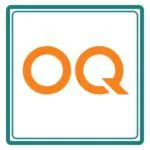

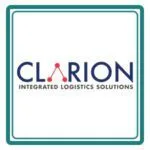


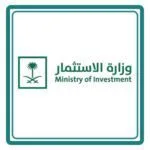
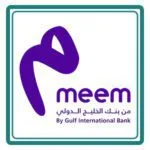
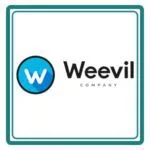
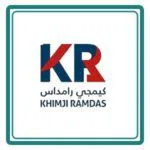


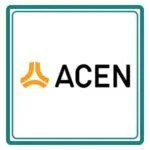
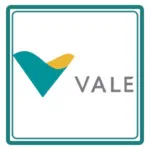

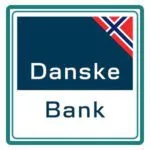



Cost Of ISO 45001 Certification In Kenya
The cost of ISO 45001 certification in Kenya depends on factors like the size of your organization, the complexity of your health and safety management system, and the specific safety goals you need to meet. PopularCert simplifies the process by providing customized solutions to meet your organization’s unique health and safety compliance needs. By partnering with PopularCert, you receive expert guidance, a smooth certification process, enhanced safety performance, and a competitive edge through adherence to internationally recognized ISO 45001 standards in Kenya. For more information and to apply for your ISO 45001 Certification In Kenya, contact us. We will guide you through the process and provide details on the cost involved to help you get started on your ISO 45001 Certification journey with PopularCert in Kenya.
Why Choose PopularCert For ISO 45001 Certification In Kenya?
Choose PopularCert for ISO 45001 certification in Kenya to ensure your organization meets international health and safety standards and achieves outstanding results. Our expert consultants will guide you through every step, from conducting a comprehensive gap analysis to successfully obtaining certification. We help you implement effective safety practices, optimize your health and safety management system, and enhance overall workplace wellbeing. With PopularCert, you’ll receive personalized support tailored to your organization’s specific health and safety needs, ensuring a smooth certification process and long-term success. Trust us to improve your workplace safety, build stakeholder confidence, and unlock new opportunities with ISO 45001 certification.
GET A FREE CONSULTATION NOW
FAQs
What is ISO 45001?
ISO 45001 is an international standard for occupational health and safety management. It helps businesses create safer workplaces by reducing risks and ensuring a safe environment for employees.
Why should we get ISO 45001 certification in Kenya?
ISO 45001 helps companies improve workplace safety, reduce accidents, and comply with health and safety regulations. It shows your commitment to protecting employees, which can boost reputation and productivity.
How long does it take to get ISO 45001 certification?
The time required varies based on the size and complexity of your organization. On average, it can take a few months to complete the certification process, including assessments and improvements.
What are the benefits of ISO 45001 certification?
ISO 45001 reduces workplace accidents, improves employee morale, and boosts productivity. It also helps comply with legal requirements and enhances your reputation as a safety-conscious company.
How much does ISO 45001 certification cost in Kenya?
The cost depends on factors such as the size of your company and the complexity of your health and safety management system. PopularCert offers affordable, tailored solutions to guide you through the process efficiently.
